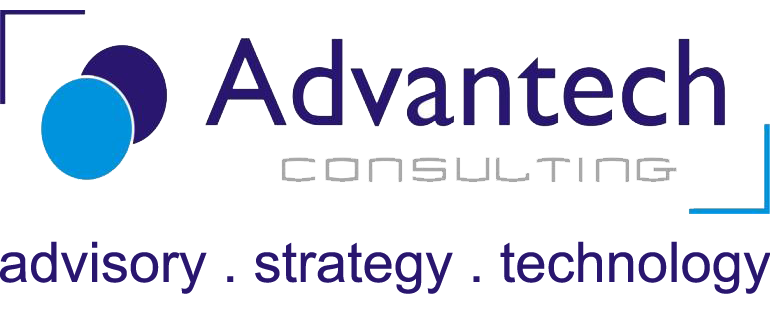In his bestseller, The 7 Habits of Highly Effective People, Dr. Stephen Covey introduced the concept of “beginning with the end in mind” to mean starting each day, task, or project with a clear vision of your desired direction and destination. This is the building block of a Theory of Change (ToC) which contravenes the traditional process of using activities to project the outcomes and instead defines long-term goals and then maps backward to identify the essential changes that need to occur earlier on (preconditions).
In monitoring and evaluation, one of our service offering at Advantech, ToC is used as an expectation management tool that not only outlines the early and intermediate changes that lead to the achievement of a project’s long-term goal but also explains the connections between activities, outputs and outcomes that occur at each step along the way. Additionally, it articulates the assumptions about the process through which change will occur and specifies the ways in which all of the required early and intermediate outcomes related to achieving the desired long-term change will be brought about and documented as they occur.
This is particularly important in the development of solutions to complex social problems such as those being addressed by the 17 Sustainable Development Goals (SDGs) and their 169 targets that aim to build on the Millennium Development Goals (MDGs). These include ending poverty, ensuring sustainable food production systems, reducing infant and maternal mortality, eliminating gender disparities in education, eradicating gender-based violence, achieving equitable sanitation and hygiene, mobilizing communities against HIV and AIDS, and curbing climate change which U.S. President Barack Obama in his 2015 State of the Union Address termed the “greatest threat to future generations”.
ToC can begin at any stage of a project/ program/ initiative – before, during, and after the lifetime – depending on the intended use. However, to best inform the conceptualization and planning, a theory should be developed at the outset and as monitoring and evaluation data become available, stakeholders can periodically refine the ToC based on evidence.
A ToC has six components
- Outcomes and Preconditions, modeled in causal pathways
- Interventions (activities/ actions), leading to the relevant outcome(s)
- Assumptions – beliefs about conditions that you think already exist and are not problematic
- Rationales – They explain the positioning of outcomes within a theory of change
- Indicators – They may be quantitative or qualitative
- Narrative – A summary of the theory that explains the overall logic, highlights major assumptions, and presents a compelling case as to how and why the initiative is expected to work.
There are five steps to create a Theory of Change
- Step 1: Identify a long-term goal for the initiative/ project/ program
- Step 2: Identify the requirements/ outcomes/ preconditions essential to achieve that goal by conducting “backward mapping”
- Step 3: Identify the interventions that the initiative/ project/ program will perform to create these preconditions
On the other hand, some preconditions such as political stability are beyond the sphere of influence of any single initiative, therefore, there is only just a subset of outcomes that the project can influence.
When they are beyond one program’s influence, stakeholders could suggest ways that a particular program may be able to influence other programs to act. Otherwise, they could identify areas for strategic collaboration or partnerships. - Step 4: For each precondition, develop indicators that will be used to assess the performance of the interventions. There are a number of key indicators that can be used:
Input indicators – used to evaluate the resources (financial, physical and human) allocated for the realization of the project objectives
Output indicators – used to measure the services/ goods and activities resulting from the inputs
Outcome indicators – used to measure the extent to which the outputs will be accessible and used, as well as how they will be used
Impact indicators – used to assess the key dimensions of impacts to establish whether the goals of the project will be achieved
Process indicators – assesses implementation processes - Step 5: Summarize the various moving parts in the project theory in a narrative that conveys the major elements of the theory easily to others and communicates how the elements of the theory work as a whole.
Importance of TOC
1. It provides a working model against which to test hypotheses and assumptions about what actions will best bring about the intended outcomes.
2. It creates an honest picture of the steps required to reach a goal.
3. It provides an opportunity for stakeholders to assess: what they can influence, what impact they can have, and whether it is realistic to expect to reach their goal with the time and resources they have available.
4. It is also critical to evaluation, providing a framework that allows organizations to know what to evaluate and when.
5. It identifies measurable indicators of success as a roadmap to monitoring and evaluation.
6. Coupling monitoring and evaluation to Theory of Change can bring a better understanding of how to improve the design and implementation of ongoing initiatives, and how to scale initiatives up or out.
7. The theory can be used:
• As a framework to check milestones and stay on course
• To document lessons learned about what really happens
• To keep the process of implementation and evaluation transparent, so everyone knows what is happening and why
• As a basis for reports to funders, policymakers, boards
8. When you have a complete Theory of Change, you will have a visual representation of the change you want to see in the community and how you expect it to come about. It is a powerful communication tool to capture the complexity of your initiative
ToC quality control criteria
In the early days of Theory of Change, Anne Kubisch and others (Kubisch 1997) established quality control criteria. These are:
1. Plausible – Refers to the logic of the outcomes pathway.
Does it make sense? Are the outcomes in the right order? Are the preconditions each necessary and collectively sufficient to reach the long-term outcomes and ultimate impact? Are there gaps in the logic?
2. Feasible – refers to whether the project can realistically achieve its long-term outcomes and impact
Does the organization have adequate resources? Does it need partners? Does the scope, expectations, or timeline of the theory need adjustment?
3. Testable – refers to indicators
Are they solid and measurable? Will they yield sufficient information to make course corrections, and to evaluate the success of the initiative? Will they be convincing to necessary audiences?
Additional ones that have been added over time:
4. Appropriate scope
5. Usability within the Organization
References
Anderson A. (2005). The community builder’s approach to theory of change: A practical guide to theory and development. New York: Aspen Institute Roundtable on community change.
Project, H. (2016). An Introduction to Theory of Change / Evaluation Methodology / Issue Archive / The Evaluation Exchange / Evaluation / HFRP – Harvard Family Research Project. Hfrp.org. Retrieved 20 May 2016, from http://www.hfrp.org/evaluation/the-evaluation-exchange/issue-archive/evaluation-methodology/an-introduction-to-theory-of-change
Theoryofchange.org. Retrieved 20 May 2016, from http://www.theoryofchange.org/





The Theory of Change has been an anchor in many change management projects. Any change management projects needs to develop the ‘burning platform’ for change, and ToC assists in this regard. Advantech has applied ToC in many development partner projects to develop business cases for new projects.